Reptile & Amphibian
News Blog
Keep up with news and features of interest to the reptile and amphibian community on the kingsnake.com blog. We cover breaking stories from the mainstream and scientific media, user-submitted photos and videos, and feature articles and photos by Jeff Barringer, Richard Bartlett, and other herpetologists and herpetoculturists.
Wednesday, July 31 2019
This kingsnake has perfect camouflage in our herp photo of the day, uploaded by kingsnake.com user rick d ! Be sure to tell them you liked it here!

Upload your own and photos at gallery.kingsnake.com, and you could see them featured here!
Tuesday, July 30 2019
This gorgeous pair of Blue Tree Monitors peking out of their hide in our herp photo of the day, uploaded by kingsnake.com user roadspawn are stunning! Be sure to tell them you liked it here!
-med.jpg)
Upload your own reptile and amphibian photos photos at gallery.kingsnake.com, and you could see them featured here!
Monday, July 29 2019
Hang in there today just like this Borneo Eared Frog in our herp photo of the day, uploaded by kingsnake.com user tropicaltreefrog! Be sure to tell them you liked it here!

Upload your own reptile and amphibian photos photos at gallery.kingsnake.com, and you could see them featured here!
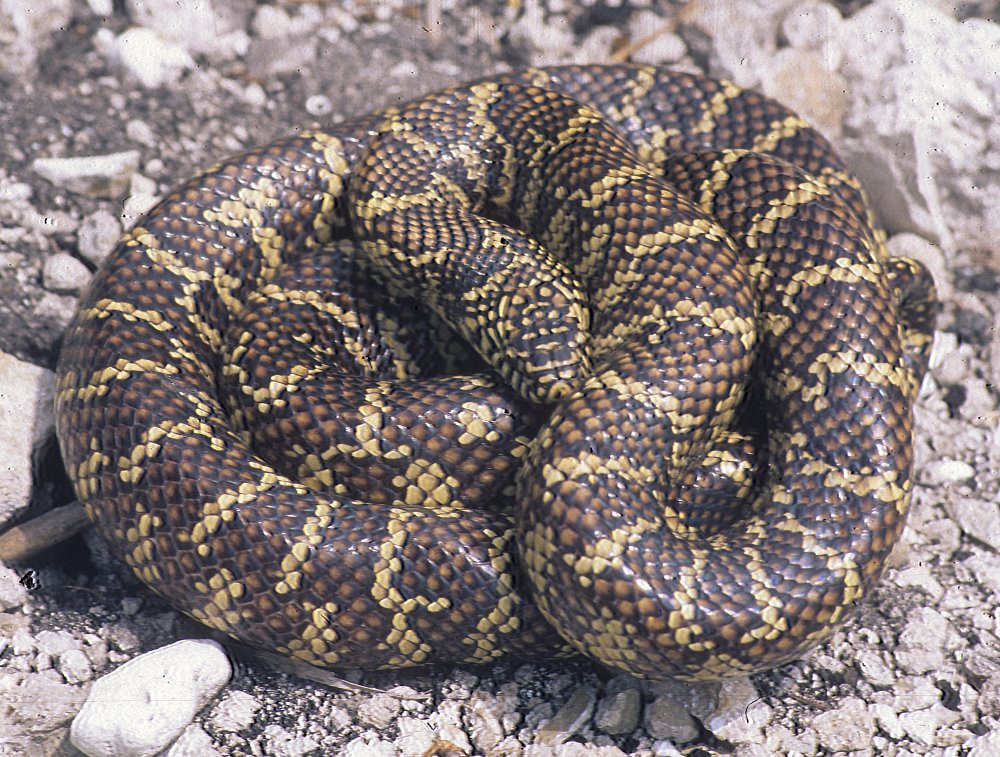 Today a Peninsula intergrade kingsnake, back then a Florida kingsnake--names change but the snakes don't care. Today a Peninsula intergrade kingsnake, back then a Florida kingsnake--names change but the snakes don't care.
Just the mention of innertubes will probably bring a quizzical expression to the faces of many of today’s young motorists. But there was a time when innertubes were a part of everyday life—an integral part whether your vehicle was a semi, a bus, a car, a motorcycle, or a bicycle. And even if you were a non-motorized but avid herper, it is probable that you soon recognized blown-out innertubes lying on roadside as being every bit as good, and possibly even better cool weather herp habitat than the sheet tin so eagerly sought by herpers today. Certainly we recognized their value back in the early ‘50s when Gordy and I began our herping escapades from New England southward. What? Why? How?
Unintended though it may have been, Gordy was my herping mentor. He was a teacher who I met while I was in junior high school and because of similar interest in herps we soon became fast friends. After making a few herping trips together from the northland with friends such as Dennie Miller & Peter Lindsey) to the fabled Pine Barrens of New Jersey (where we met Asa Pittman) and to Okeetee (where we met Carl Kauffeld, Zig Leszynski, Bob Zappalorti, Manny Rubio, and others) we decided that the next step in our herping education would be Christmas trips to Sunny Florida. We could barely imagine leaving snowy, frigid, Massachusetts and arriving a day later in the palm shrouded balminess of South Florida (where we eventually met Ralph Demers, Warren Prince, Rhea Warren, Dade Thornton, John Truitt, the Weeds, and dozens of other herpers). But I think it might have been Frank Weed, Jr. or Rhea Warren who introduced us to the wonders of innertubes.
Back in those days US 27 was a 2 lane road, lined tightly with huge Australian pines, Brazilian pepper, and undergrowth. Sod farms and Sugarcane were just getting a foothold. The Everglades still remained on the west side of the road up to Okeelanta. Pump houses, fallen billboards, and abandoned shacks – all rat snake hotels - were scattered helter-skelter. Amidst the shady undergrowth lay dozens of blown out innertubes and on cool sunny winter days those innertubes housed, both in and under, garter snakes, rat snakes (most of which were “true” Everglades rats), kingsnakes (of both the big peninsula species and the smaller scarlet kings, kingsnakes, and more kingsnakes.
When you hear “old timers” like John Truitt, Ron Sayers, Jerry Fine, or me talk about “those good old days,” the reason is simple. Those WERE the good old days!
Continue reading "Innertubes"
Friday, July 26 2019
Happy Rattlesnake Friday! Here's lookin' at you kid! Check out this gorgeous albino Southern Pacific Rattlesnake in our herp photo of the day uploaded by kingsnake.com user lichanura . Be sure to tell them you liked it here!

Upload your own reptile and amphibian photos at gallery.kingsnake.com, and you could see them featured here!
Thursday, July 25 2019
Tick Tock. The week passes quickly but today is easier starting with the smile of a Nile Croc in our herp photo of the day, uploaded by kingsnake.com user CDieter! Be sure to tell them you liked it here!

Upload your own reptile and amphibian photos photos at gallery.kingsnake.com, and you could see them featured here!
Wednesday, July 24 2019
This curious little wild Rat snake is checking out the herper in our herp photo of the day, uploaded by kingsnake.com user cmac107 ! Be sure to tell them you liked it here!
.jpg)
Upload your own and photos at gallery.kingsnake.com, and you could see them featured here!
Tuesday, July 23 2019
What a beautiful boa constrictor in our Herp Photo of the day, uploaded by kingsnake.com user biophiliacs . Be sure to tell them you liked it here!

Upload your own reptile and amphibian photos at gallery.kingsnake.com, and you could see them featured here!
Monday, July 22 2019
This is a once in a lifetime shot! How cool is this field shot of an Alameda whipsnake grabbing a meal in our herp photo of the day, uploaded by kingsnake.com user trevid ?! Be sure to tell them you liked it here!

Upload your own and photos at gallery.kingsnake.com, and you could see them featured here!
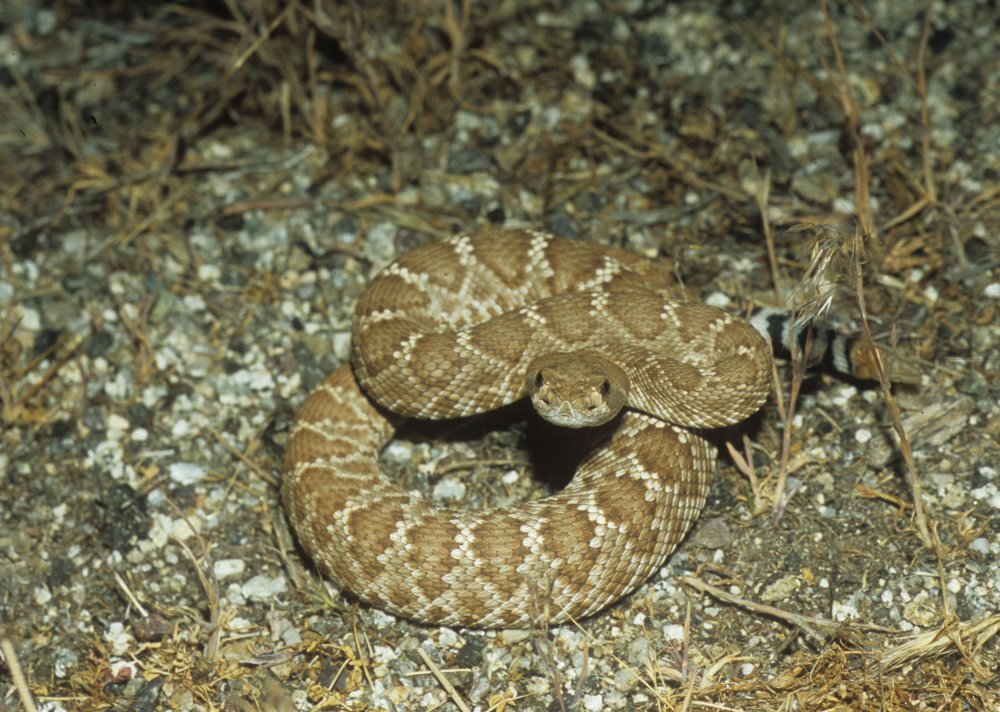
The first herp of the night, a young red diamond rattler.
Home was now about 2500 miles behind me and I was headed for a mountain grade that I had found on previous trips to be a wonderfully productive herping venue as well as incredibly scenic. And did I mention that because of typically high speed California traffic on a 2 lane roadway typified by many tight hairpin curves, it was also just a bit on the dangerous side, AND, and this was the most important part, along those dangerous curves, edged tightly by towering cliff-faces this road became the home of the coveted Coleonyx switaki, the Peninsula banded or Switak’s banded gecko. It was almost dusk now, but finally after my cross-country speedathon, my destination was less than an hour away.
And then I was making the final righthand turn…
Once on the mountain grade, one of the first reptiles seen was a juvenile red diamond rattlesnake, Crotalus r.ruber. At this inland location these snakes are not as brightly colored as many coastal populations, but they are nonetheless an impressive and welcome find. Although adults may exceed a heavy-bodied 5-feet in length, the one now before me was only about 2-feet long. I stopped, moved the snake to the side of the road, took a few pictures, and continued on.
Still on the descent I saw a California lyre snake, Trimorphodon lyrophanes, a California night snake, Hypsiglena o. nuchalata. Desert banded geckos, Coleonyx v. variegatus, and Peninsula leaf-toed geckos, Phyllodactylus nocticolus. It was already a banner night.
At the bottom, at the far side of the town, the moving sands on roadside produced several very active Colorado Desert shovel-nosed snakes, Chionactis occipitalis annulata, as well as an adult female Colorado Desert sidewinder, Crotalus cerastes laterorepens, the latter basking quietly on the still-warm pavement. It was a large, obviously gravid, and very feisty female. She struck several times in displeasure as I moved her onto the sand. Once on the move she looped across several yards of sand then stopped and coiled against the base of a creosote bush.
Back to the top then down to the bottom seeing zero herps. But then things picked up again. Up and down, up and down. Every banded gecko caused an abrupt slowing. Could it be, I wondered—could it be? I glanced at the clock. It was 0310 in the morning. The moon had disappeared from sight behind the towering cliff almost an hour ago. I decided to make one more run then head for the motel (that was still more than an hour’s drive away).
I drove down to a pulloff, turned around and headed up-grade for the last time. Whoops! Was that a lizard that I had just driven by? It was 0317 AM.There was no traffic so I backed up a bit and—yes it was a lizard. I parked, hopped out, crossed the road, and stared in disbelief at the lizard in my light.
After a decade of looking and more than 10s of thousands miles of driving, I had finally found the coveted Baja gecko. Fatigue was forgotten as I took picture after picture of the lizard. Knowing full well that I may never see another I bracketed, availed myself of several lenses, and went through a full set of batteries in the flash unit. Certainly I thought, as I walked to the car, some of those pictures should be satisfactory. Dawn was breaking as I drove into the motel. A full day’s sleep would be welcome.
Continue reading "Reds, Winders, and Geckos"
Friday, July 19 2019
Happy Rattlesnake Friday! This certainly is not a rattlesnake, but it is a beautiful venomous creature. What a great close up of a Gaboon Viper, uploaded by kingsnake.com user magnum26 is full of sassy and potentially life-saving venom! Be sure to tell them you liked it here! As always on Friday, we celebrate all of our venomous reptiles for their contribution to the world.

Upload your own reptile and amphibian photos at gallery.kingsnake.com, and you could see them featured here!
Thursday, July 18 2019
Our Herp Photo of the Day shows and amazing look inside the egg of a Russian Tortoise to be, uploaded by kingsnake.com user tortusjack!
Be sure to tell them you liked it here!

Upload your own reptile and amphibian photos photos at gallery.kingsnake.com, and you could see them featured here!
Wednesday, July 17 2019
How lovely is this great field shot of this Black Salamander found in a redwood forest in our Herp Photo of the day, uploaded by kingsnake.com user sc_shark!? Be sure to tell them you liked it here!

Upload your own reptile and amphibian photos photos at gallery.kingsnake.com, and you could see them featured here!
Tuesday, July 16 2019
Rolling out a true giant to celebrate World Snake Day! The Reticulated Python, as you can see in our Herp Photo of the Day, uploaded by kingsnake.com user DEATH, is truly a gentle giant! Be sure to tell them you liked it here!

Upload your own reptile and amphibian photos photos at gallery.kingsnake.com, and you could see them featured here!
Monday, July 15 2019
Sometimes you need to look outside the box! This stunning Sunbeam Snake may not be the most colorful on first glance, but as you can see in our Herp Photo of the Day, they are a truly beautiful snake, uploaded by kingsnake.com user mecdwell! Be sure to tell them you liked it here!

Upload your own reptile and amphibian photos photos at gallery.kingsnake.com, and you could see them featured here!
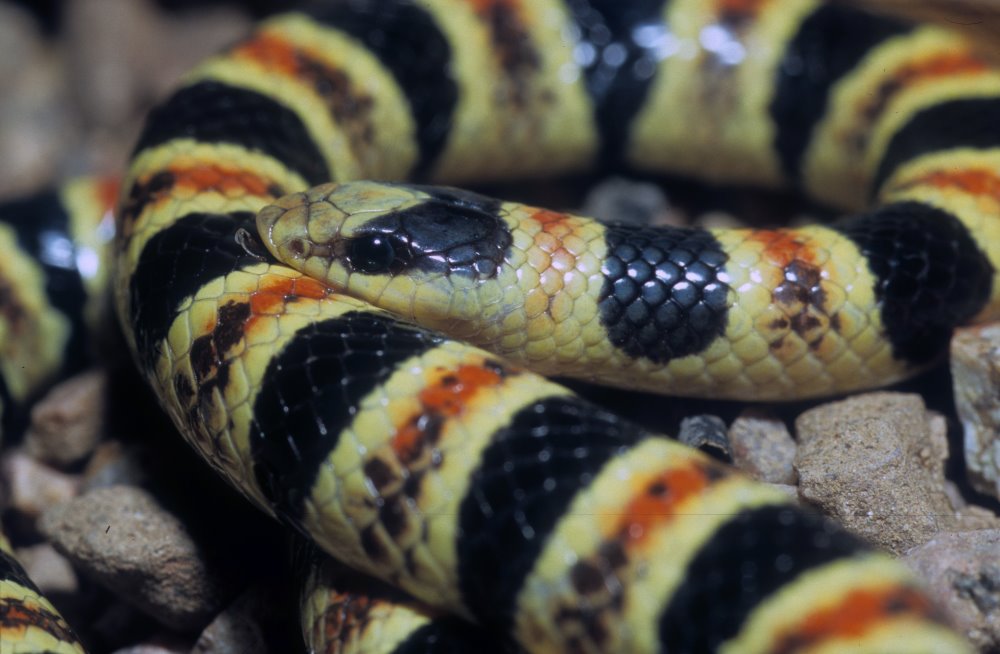
What it all boiled down to was the fact that I needed a photo of a Tucson shovel-nosed snake, Chionactis occipitalis klauberi. But boiled down even further was the fact that aftter failing on several lengthy trips to find one it was time to seek expert help. So I dialed up Arizona herp Guru, Randy Babb. And Lady Luck was with me, Randy agreed to take me afield in search of my elusive and increasingly enigmatic goal.
For reasons not yet fully determined this, the Tucson shovel-nosed snake, the southeasternmost subspecies of the genus, had become difficult to find over the years. Since comparatively few people have much interest in the small burrowing snakes, few people seemed aware of the population reductions. And of those that were aware, no one could venture a reason, But where you could once find two or three examples on a good night, you were now lucky to be able to see one a year and often saw none. Randy hadn’t returned to his study site, hundreds of acres in a wildlife management area and the paved road that bisected this expanse, in several years, but the weather seemed perfect so we began our search. Randy. Andy Holycross and Charlie Painter came by Randy’s to visit and photograph herps, and got recruited into the search. Since Andy happened to be looking at the genetics of the genus, recruitment wasn’t too difficult.
We elected to only roadhunt, and drove for hours on each of three nights. For our efforts the combined number of shovel-noses found was 2 thoroughly crushed DORs and 1 that had seemingly been hit but that was still alive and was very photographable. It wasn’t what I had hoped for, but it at least filled a photograph gap. Interestingly, we saw no variable sand snakes, Chilomeniscus stramineus (those north of the border are not too variable, being off-white below, pinkish-orange above, and having a regular series of prominent black dorsal saddles), while roadhunting Randy’s site. Randy was a little perplexed by this lack, for sand snakes, once as common as the shovel-noses, now seemed equally uncommon. Whether it is just our sampling technique (we might have been a month to late for the peak movement of these snakes) or whether there is an actual downturn in the populations of these two snakes remains to be seen.
Continue reading "Where Have All the Sand Dwellers Gone."
Friday, July 12 2019
Happy Rattlesnake Friday! All venomous snakes need our support, and this stunning Olmec Pit Viper ( Atropoides olmec) in our herp photo of the day uploaded by kingsnake.com user PeteSnakeCharmer is no exception! Be sure to tell them you liked it here!

We celebrate #RattlesnakeFriday to celebrate the wonderful venomous species that contribute to making our world greater and also use it as a way to support conservation efforts to protect these species worldwide!
Upload your own reptile and amphibian photos at gallery.kingsnake.com, and you could see them featured here!
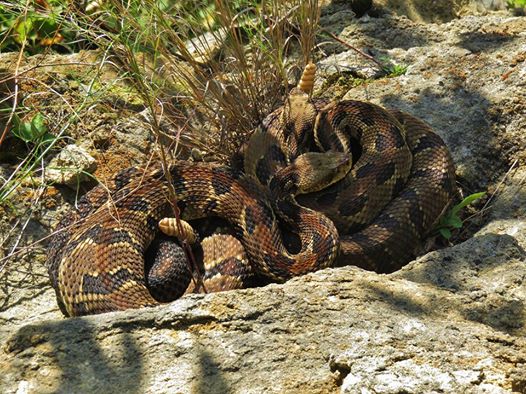 An Oklahoma couple were arrested while in possession of a stolen vehicle, weapons, whiskey and a rattlesnake, oh yeah and a container of radioactive uranium?! Trust me, we checked, this isn't The Onion! It is real life.
From Oklahoma's New 4:
The traffic stop was made at 11 a.m. in a Guthrie neighborhood because the tag was expired. Jennings was in the driver's seat, Rivera in the passenger seat, and in the backseat, a pet Timber rattlesnake in a terrarium.
At about the same time Jennings told officers he had a gun in console, police learned the Ford they were driving was reported stolen.
"So now he's got a rattlesnake, a stolen vehicle, firearm, and somebody under arrest," said Guthrie Police Sgt. Anthony Gibbs.
Oddly enough, the rattlesnake was legal as Jennings had a valid fishing license at the time. No charges as of yet on the uranium.
To read the full story, click here.
lead photo of timber rattlesnake. credit and thanks to John Kirinovic.
Thursday, July 11 2019
Gotta love the smile from this Monkey Tail Skink in our herp photo of the day, uploaded by kingsnake.com user sreps ! Be sure to tell them you liked it here!

Upload your own reptile and amphibian photos photos at gallery.kingsnake.com, and you could see them featured here!
Wednesday, July 10 2019
Such an amazing wild shot of a Black Racer in our herp photo of the day, uploaded by kingsnake.com user piglet! Be sure to tell them you liked it here.

Upload your own reptile and amphibian photos photos at gallery.kingsnake.com, and you could see them featured here!
Tuesday, July 9 2019
An all American, this Baja black-collared lizard basks in it's own freedom in our Herp Photo of the day, uploaded by kingsnake.com user Brockn ! Be sure to tell them you liked it here!

Upload your own reptile and amphibian photos at gallery.kingsnake.com, and you could see them featured here!
Monday, July 8 2019
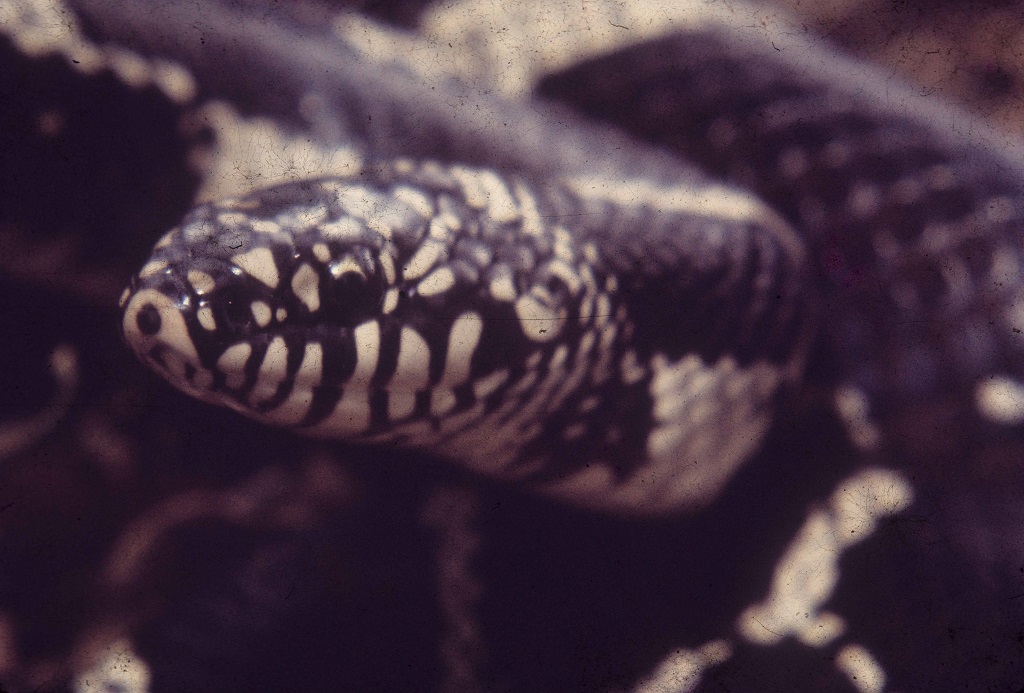
60+ years ago, when I saw my first eastern kingsnake in New Jersey, I could hardly believe my luck.
Today, some 60 years hence, I can still remember coming southward with Gordy to central New Jersey from Massachusetts on a spring morning and finding big, beautiful, white-chained, black eastern kingsnakes, Lampropeltis getula getula, as they searched and prodded for turtle eggs along the edges of sloughs and marshes. They weren’t numerous there, but it only took the finding of one or two to make a success of the whole trip. Then I can remember other trips when we went further south to the Low Country of southeastern South Carolina and found so many eastern kingsnakes that both my Gordy and I were utterly dismayed. I feel quite certain that although the eastern kingsnakes are still in these areas, they are now less common than in those long ago days.
The memory of Dennie Miller showing Gordy Johnston and me dozens and dozens of eastern black kingsnakes, L. g. nigra, under roadside trash in Arkansas remains indelibly imprinted somewhere in some memory niche. The shiny black snakes were of sullen disposition and sparsely patterned with a vaguely discernible chain pattern and a peppering of light scales on their sides.
And Ron Sayers and I used to shake our heads in disbelief at the vast numbers of speckled kingsnakes, L. g. holbrooki, (their bright yellow pepper-spots fairly glistening against their intense black body color) that we would see beneath debris on the sides of Louisiana levees as we made our periodic herping trips to and from Old Mexico, Texas, and Arizona. These were the good days
When Gordy Johnston and I finally expanded our herping horizons as far south as Florida we found eastern kings common on Paynes Prairie (there have been only two kingsnakes found anywhere near Paynes Prairie in the last two decades! The reason for the decline is unknown.). The Paynes Prairie kings looked a bit different than the eastern kings from further north, but they were still very recognizable.
We left the eastern kingsnake phenotype behind as we traveled further southward on the Florida peninsula. Near Lake Okeechobee we found ourselves amidst hordes of the brown and cream kingsnakes then known as Florida kingsnakes. Today they are recognized as the Florida Peninsula intergrade kingsnake, L. g. getula x L. g. floridana, and are thought of by most as snakes of the sodfields and sugarcane.
Back then there were few sodfields, but sugarcane was taking hold and peanuts were a staple. The irrigation canals were being dug, leopard frogs were moving in, water snakes followed them, and indigos and kings trailed the waters. Of course, there were rodents in the fields, additional fodder for the snakes that dwelt in these habitats. But best of all, the main north-south road, US27, was edged on both sides by Australian pines, beneath which blown out tire innertubes lay helter-skelter and in these the kings sought refuge on cold days. Additionally, there were many outcroppings of jumbled oolitic limestone, grown over with recumbent blackberries and other vines, that were also replete with the kingsnakes. It was almost impossible not to find a fair number of them.
And today (2019), although the various chain kings seem harder to find in the wild, eastern, speckled, black, and intergrade kings with genes yet unsullied, continue to be readily available in herpetoculture. Certainly there are albinos and other morphs, but many with normal genes have not yet been overlooked. I guess that once a hobbyist favorite, always a hobbyist favorite. At least I hope so.
Continue reading "Chain Kings, North and South"
Prevent your case of the Mondays by faling in love with this hatchling Big Head Turtle ( Platysternon megacephalum) in our Herp Photo of the day, uploaded by kingsnake.com user stingray ! Be sure to tell them you liked it here!

Upload your own reptile and amphibian photos photos at gallery.kingsnake.com, and you could see them featured here!
Friday, July 5 2019
Happy Rattlesnake Friday! All venomous snakes need our support! This Cottonmouth is screaming it from the field in our herp photo of the day uploaded by kingsnake.com user BowieKnife357 ! Be sure to tell them you liked it here!

Upload your own reptile and amphibian photos at gallery.kingsnake.com, and you could see them featured here!
Wednesday, July 3 2019
This Northern Pine does in our Herp Photo of the day, uploaded by kingsnake.com user Turekj sparkles like a firework! Be sure to tell them you liked it here!

Upload your own reptile and amphibian photos photos at gallery.kingsnake.com, and you could see them featured here!
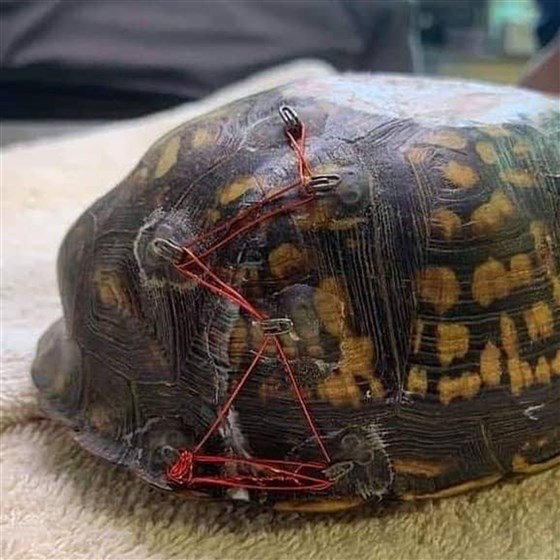
When you have to put a turtle shell back together sometimes you need to get creative and that is exactly what the folks at Carolina Waterfowl Rescue did!
To stabilize the shell pieces and help them stay in place, they superglue the bra clasps to the shell to help offer additional support to the cracked shell pieces! As can see in the photo, it is brilliant!
To read more about the story, click here. And if you happen to have a few old bras laying around that are past their prime, consider checking with your local wildlife rehab group to see if they can use them!
Tuesday, July 2 2019
Red and black? Black and yellow? Mimics in nature are clear with this pair of South American hognose from the same clutch in our herp photo of the day, uploaded by kingsnake.com user Longhitano!

Be sure to tell them you liked it here!
Upload your own reptile and amphibian photos at gallery.kingsnake.com, and you could see them featured here!
Monday, July 1 2019
This Ambilobe Panther Chameleon is all fired up in our herp photo of the day, uploaded by kingsnake.com user vinniem1210! Be sure to tell vinniem1210 you liked it here!

Upload your own reptile and amphibian photos photos at gallery.kingsnake.com, and you could see them featured here!
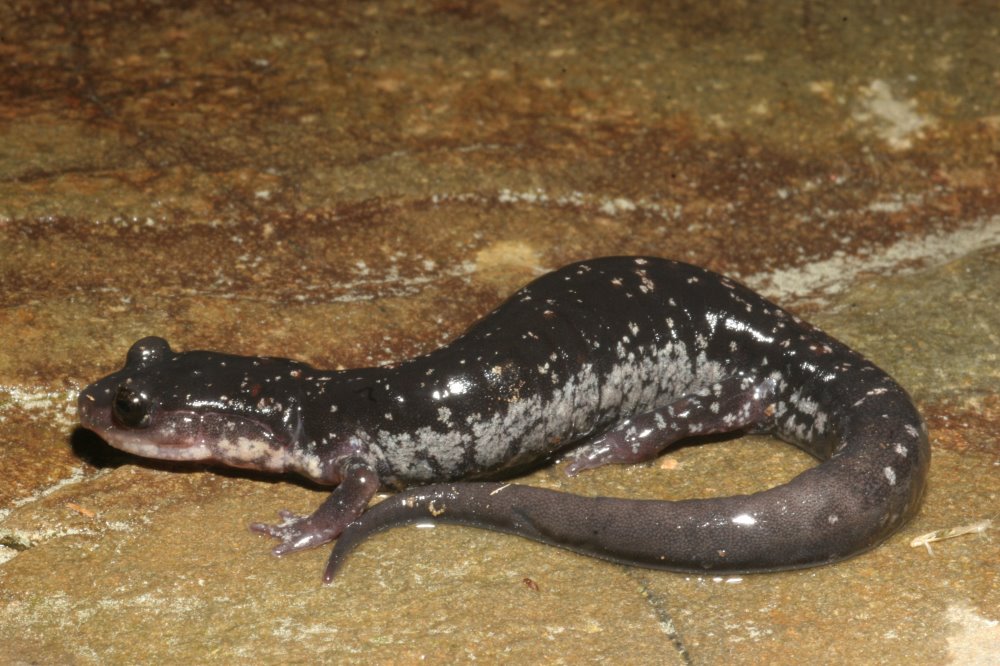
This is an example of one of the less colorful Rich Mountain salamanders.
If discussions about salamanders come up at all, it is often the big mole salamanders, newts, hellbenders, or the Appalachian group of plethodontids that have brought the discussion about. All too often the caudates of the central states are completely overlooked. This is sad because there are some noteworthy salamander taxa in the montane regions of Missouri and Arkansas. On more than one occasion I’ve hopped in the car and headed westward, photos of the grotto salamander, the ringed salamander, or the beautiful and variable Rich Mountain salamander, Plethodon ouachitae.
As I mentioned above, the Rich Mountain salamander, a very typical plethodontid, is a variable taxon. Adult at a robust 5 to 6 inch length, in some populations this salamander may simply be black and marked dorsally and laterally with a variable number of white and bronze flecks. Elsewhere it may retain the variable flecking on black sides but have a have a beautiful, rich, chestnut dorsum, it too being flecked. On some examples the flecking may be so reduced that it can be overlooked at first glance, and on others, as mentioned, it may be the chestnut coloring that is reduced.
At the eastern end of its range the Rich Mountain salamander may hybridize with the closely related Fourche Mountain salamander, Plethodon fourchensis. This latter was long considered a subspecies of P. ouachitae, and probably should have remained so.
The pretty Rich Mountain salamander occurs in a variety of habitats. Some populations seem to prefer the cover of leaf and moss covered rock slides. Others may be found beneath damp logs or trash.
But one thing is certain. If you like caudates the Rich Mountain salamander is well worth the time you spend in your search, but be certain you do photograph enough to display at least some of the wide variations in color.
Continue reading "The Rich mountain salamander"
|



